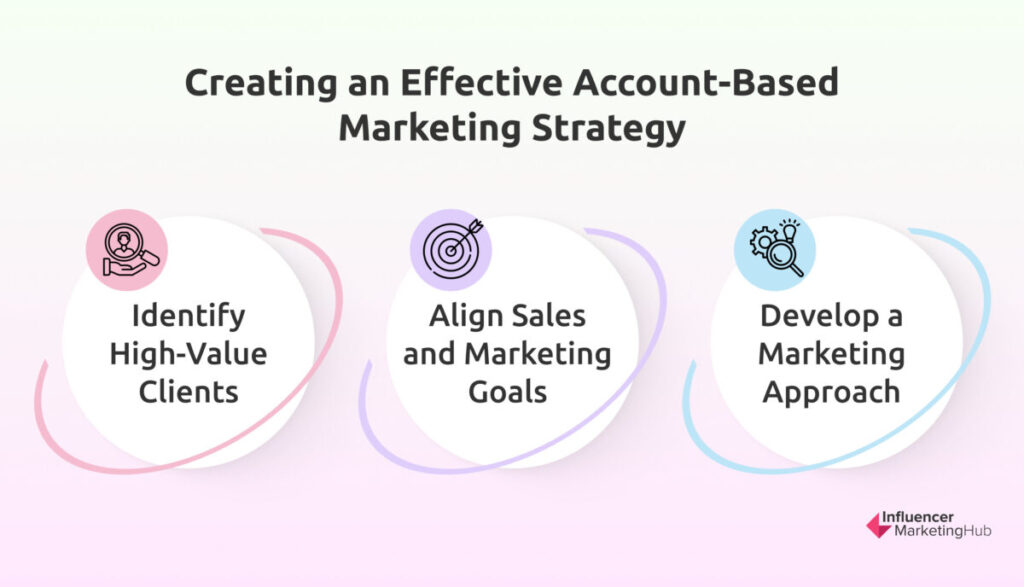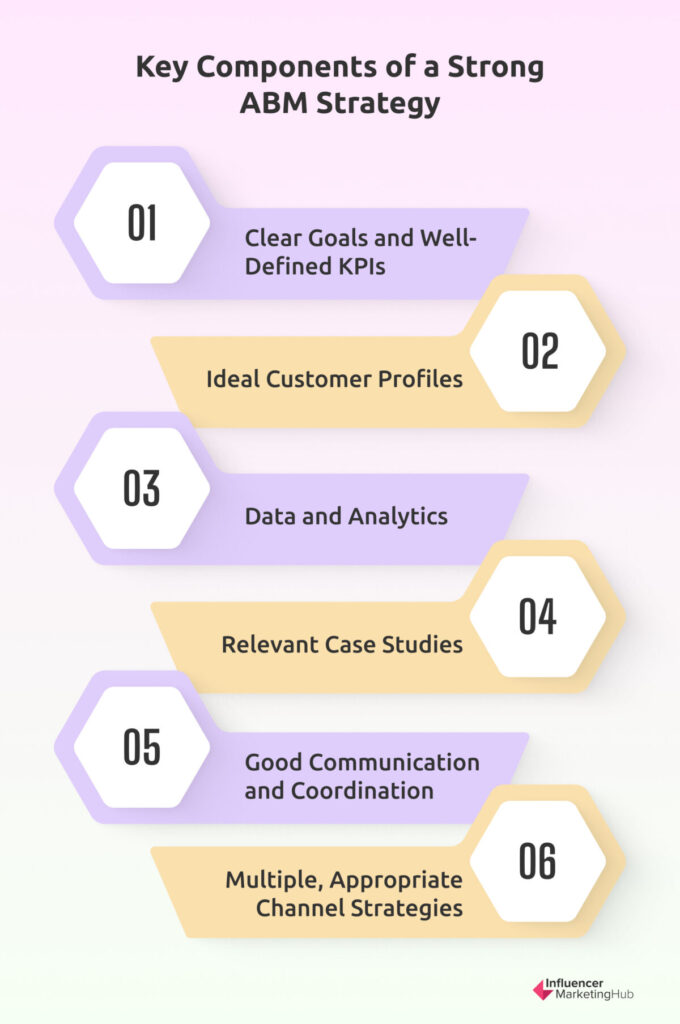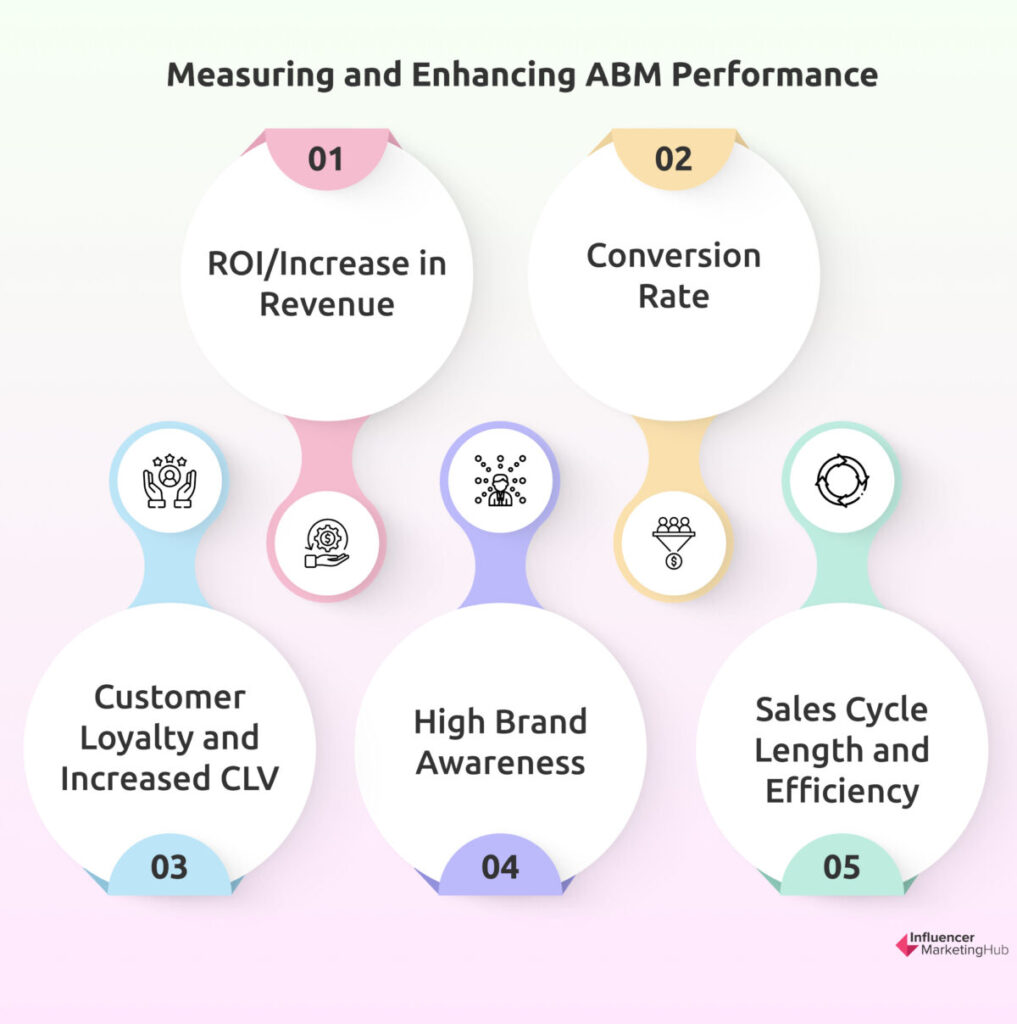Account-based marketing, or ABM, is a marketing strategy mainly employed by B2B companies where they treat each account or client as its separate market. Usually, companies that practice ABM have high-value clients that bring consistent revenue to the business, so nurturing these accounts is essential for customer loyalty.
Your Guide to Unlocking Success Using Account-Based Marketing Strategy That Works:
Understanding Account-Based Marketing
In ABM, the sales and marketing teams work together to cultivate a good relationship with high-value clients. They create meaningful connections through personalized sales and marketing experiences for these accounts to encourage loyalty and increase customer lifetime value. Because acquiring new clients can be up to five times more costly than customer retention, ensuring their high-value clients stay with them is in a business’s best interest.
In terms of winning new clients, an ABM strategy focuses on specific leads, those they have determined to be potentially high-revenue customers and those that fit the company's target customer profile. This contrasts with a marketing strategy where the target market is generally broader. This is why sales and marketing need to consistently communicate with each other to focus their efforts on high-potential prospects rather than waste time marketing to less viable leads.
ABM can help companies see higher ROIs because of customer retention and loyalty. 76% of B2B marketers have said that ABM strategies have a higher ROI than other marketing approaches. In a nutshell, ABM's targeted system ensures that prospects and clients receive personalized communications and solutions to their needs. It's similar to, but not quite the same as, the concept of inbound marketing, which is a more basic marketing strategy.
How to Craft an Effective Account-Based Marketing Strategy

Identify High-Value Clients
Because ABM entails personalized strategies per account, crafting your overall strategy requires intimate knowledge of your high-value clients. For existing accounts, the sales team can identify these based on historical data on revenue. For lead generation and new client acquisitions, the sales and marketing departments must jointly determine what type of customer to target.
Similar to the marketing practice of creating customer profiles, you would also need to identify the specific markets you would be targeting. This step is crucial to creating a practical ABM framework for your business. Remember, ABM is all about personalizing each client and delivering premium experiences, so it is best to have as much knowledge about them as possible. Knowing what these clients look for will help you create a personalized approach for them, increasing your chances of converting them into loyal customers.
Align Sales and Marketing Goals
An effective ABM strategy requires cooperation between the sales and marketing teams. If you still need to conclude from the previous paragraphs, sales and marketing are closely intertwined in an ABM strategy. The importance of collaboration between sales and marketing is becoming more apparent in the business sector, with 24% of sales leaders responding that alignment between these two departments is a top goal for their company. The two departments must work on a shared vision anchored on the business' vision. The business will only succeed if the marketing goals support the sales goals.
In the beginning, both teams must create a set of goals and objectives that will support the overall business goals. From these, they will then be able to determine the specific tasks and objectives they need to work towards to fulfill their goals.
Develop a Marketing Approach
Another critical thing that the sales and marketing teams need to be aligned on is their approach. Once they have defined their ideal customer profile, the groups must agree on how best to communicate with these customers and get them through the marketing funnel.
An ABM strategy focuses on delivering premium experiences to clients starting from the first point of contact. This means removing pain points, clear communication, and products that address their needs. For this, you'll need to understand thoroughly the sales process and how a prospective customer moves through it. You'll need to identify problematic areas and fix them so that it addresses what the customer is looking for.
Features of a Good ABM Strategy
Not all companies that do an ABM strategy can acquire high-value clients. Successful ABM strategies are composed of several elements that contribute to good results.

Clear Goals and Well-Defined KPIs
Any strategy needs to begin with clear goals and well-defined measures of success to be effective. An ABM strategy is no different. The goals and objectives of an ABM-structured campaign need to be clear to everyone involved, and key performance indicators (KPIs) must also be defined clearly. Monitoring the progress of ABM is also essential, so KPI must also be measurable and offer valuable insight for the next steps. Finally, the KPIs must, of course, contribute to the overall business goal of the company.
Ideal Customer Profiles
Buyer personas or ideal customer profiles (ICP) are integral to a marketing campaign. Decisions about the marketing approach will come from who the customer is, what they want, what they don't want, and what they respond to the most, among others. Customer profiles will also dictate where and when marketing efforts will be most effective.
Data and Analytics
In this data-rich age, relying on anecdotal evidence is a no-no for businesses. With so many data-gathering and analytics tools at your disposal, you will be doing the company a disservice by not using data to inform your decisions. Data-driven insights can help you create solid ICPs, analyze your conversion rates, and pinpoint areas of your strategy that need improvement. For a plan to work well, real-time data is vital.
Relevant Case Studies
Showing prospective clients your work with other customers will allow them to see how it will be to partner with you. Provide relevant case studies that might interest new clients. This strategy has multiple purposes—it shows the new customer how you work, provides them with more information about the results you can bring them, and gives them solid evidence that you deliver on your promises.
Good Communication and Coordination
We've already established that the sales and marketing teams must collaborate for a sound ABM strategy. Consistent communication must be emphasized, as ABM is all about nurturing the relationship between the company and the client. Each step in the ABM journey must be communicated clearly between team members, across teams, and even external stakeholders. This includes the point person in the customer's team and any other people involved in the work.
For the sales and marketing teams to work well together, they must establish a pattern of continuous engagement with each other. In big companies with many high-value customers, enterprise marketing strategies can become complex, making it easy to forget the agreed-upon approach or the target ICPs to market to. A consistent communication strategy, such as regular meetings or reports, should be established for better workflows. This will also help nip issues in the bud before they get too big to handle and correct.
Multiple, Appropriate Channel Strategies
Website, social media, real-world events—the landscape of marketing channels has grown exponentially since the early days of the Internet. Cross-channel campaign management, or CCCM, is used by businesses that need to market and build their brand across different channels. ABM marketers need to keep this in mind when crafting their strategies. There are multiple ways to reach a potential client and opportunities to establish a working relationship with them.
However, because there are numerous ways of reaching ideal customers does not mean you should utilize all channels. The best ABM marketers know which channels their target audience is active on. Save your budget on advertisements and marketing efforts on every available channel; use selected channels that the data say are most effective in getting a lead.
Measuring and Optimizing ABM Success
KPIs are standard in any project management toolkit, ABM included. At the beginning of the process, the sales and marketing teams should have identified these KPIs that will allow them to gauge their ABM strategy's success (or failure).
Here are some of the most important KPIs to consider in measuring ABM success.

ROI/Increase in Revenue
ROI is perhaps the first thing C-suite executives will question about any company strategy that will cost money. This is an important KPI to track, but you must also specify the percentage you'll classify as a "success." You could have a positive ROI, but you need more to make it worthwhile. Is a 10% increase in revenue in three months a good indicator of success for your company? Previous sales and revenue data will help the teams determine a good number to target. You want something that can challenge the company but is still realistic.
Conversion Rate
Nurturing existing clients is very important, but you must also market to prospective clients. If the company aims to increase its customer base, then acquisitions are also a good KPI. Do your ABM marketing strategies succeed in converting prospects to customers?
Of course, you may also define conversion in several ways. This can range from the prospect requesting a quotation or demo to making a purchase.
Customer Loyalty and Increased CLV
Ideally, loyal customers who regularly do business with you increase their orders over time. If customers are happy with your products and services, you'll be their first choice when their business grows and their requirements increase. Of course, increasing the CLV of your clients may be considered a long-term goal, as trust between client and company needs to be established over time.
High Brand Awareness
One of the KPIs of any marketing strategy is brand awareness. Selling to high-value customers means marketing your business as a similar, highly sought-after supplier. And as inbound marketing principles dictate, you want customers to come to you. Brand awareness helps your business attract more relevant prospects, which is better for ABM.
Sales Cycle Length and Efficiency
The sales cycle length—the time it takes to close a sales deal after the initial contact with the customer—is regularly used in business as a KPI for guiding business strategy and financial planning. Typically, a long sales cycle is a disadvantage. An ABM strategy can shorten the sales cycle because targeted and personalized experiences usually remove some of the pain points in the sales funnel. The customer gets specific options for the solutions they need, and the business strives to provide top-notch customer service, including timely communication and product delivery or service fulfillment.
The sales cycle is also more efficient with an ABM strategy. Because the focus is only on a handful of similar prospects that are guaranteed to bring in revenue, the budget and effort are streamlined and targeted. This frees up resources for you to concentrate on the stages of the sales cycle that can further help you achieve your goals.
Case Studies and Real-World Examples
GumGum for T-Mobile and McDonald's
Technology and media company GumGum's ABM strategy and tactics are exceptional. They launched an ABM campaign targeting T-Mobile, and they indeed did their research. The company discovered that T-Mobile's CEO at the time, John Legere, was a comic book fan. GumGum used this knowledge to create a personalized comic, "T-Man and Gums," about a superhero duo fighting bad mobile service.
GumGum printed 100 copies and sent them to T-Mobile. Legere found it amusing and tweeted about it a few hours after receiving a copy, inviting GumGum for a meeting and eventually ending up as a client.
I love this!! Thank you @GumGum for making this epic comic book about @TMobile. Go #Tman!!! https://t.co/ygzWVS947d pic.twitter.com/wFp8CAiGz1
— John Legere (@JohnLegere) November 29, 2016
In another ABM campaign by GumGum, the creative agency targeted McDonald's. But getting noticed by such a big company might take forever without some creativity. To stand out from the competition, GumGum created special burger kits—using the ingredients of a Big Mac to showcase GumGum's technology—and sent them to the top prospects at McDonald's. The equipment encouraged the recipients to unpack and interact with it using their Big Mac product. GumGum then coupled it with social media posts that tagged the executives, promoting their marketing stunt. Because of their efforts, GumGum secured a meeting with the fast-food giant.
GumGum's tactics show us that ABM strategies involve knowing your target customer so well that you can get their attention despite a sea of competition. Add to that a dash of creativity, and you can find yourself at the same table as the executives of your prospective customer.
DocuSign's Personalized Landing Pages
DocuSign, a company that helps organizations manage electronic documents, had started utilizing ABM to target 450 clients who fit their ICP. And yet, after reviewing their metrics, they realized that their prospects were leaving the website before reaching the most relevant and essential content.
They determined they had to up their ABM game and created personalized landing pages that fit their targets' industry and other vital factors. They made more dynamic content to further pique the prospective customers' interest, including solutions to the client's needs.
This change in their tactic resulted in DocuSign achieving a 22% increase in their sales, thanks to a 59% engagement rate, a 300% increase in page views, and a 26% bounce rate reduction.
Frequently Asked Questions
Why should businesses adopt ABM?
ABM provides multiple benefits like aligning marketing and sales, enhancing relevance among high-value accounts, ensuring consistent customer experiences, and a more precise measurement of ROI. It also streamlines the sales process and helps in expanding business through deepened account relationships.
How Does ABM Differ from Traditional Marketing Strategies?
Unlike traditional marketing where the target market is generally broader, ABM focuses specifically on high-value clients or leads that fit the company's target customer profile. The customized approach in ABM helps in nurturing these particular accounts, resulting in higher ROI and increased loyalty.
Why is Sales and Marketing Alignment Crucial in ABM?
In ABM, sales and marketing must work closely to create personalized experiences for high-value clients. The alignment ensures that both departments work towards shared goals, focusing their efforts on high-potential prospects, thereby increasing efficiency and effectiveness in acquiring and retaining clients.
How Important Is Data and Analytics in ABM?
In today's data-rich environment, leveraging data and analytics in ABM is crucial. It helps in creating solid ideal customer profiles (ICPs), analyzing conversion rates, and pinpointing areas of the strategy that need improvement. Real-time data provides actionable insights that drive decision-making.
How do ABM and Inbound Marketing complement each other?
Inbound marketing helps in attracting target accounts, while ABM accelerates the process to win and delight these accounts with exceptional customer experiences. Together, they ensure a wider reach and more effective targeting.


